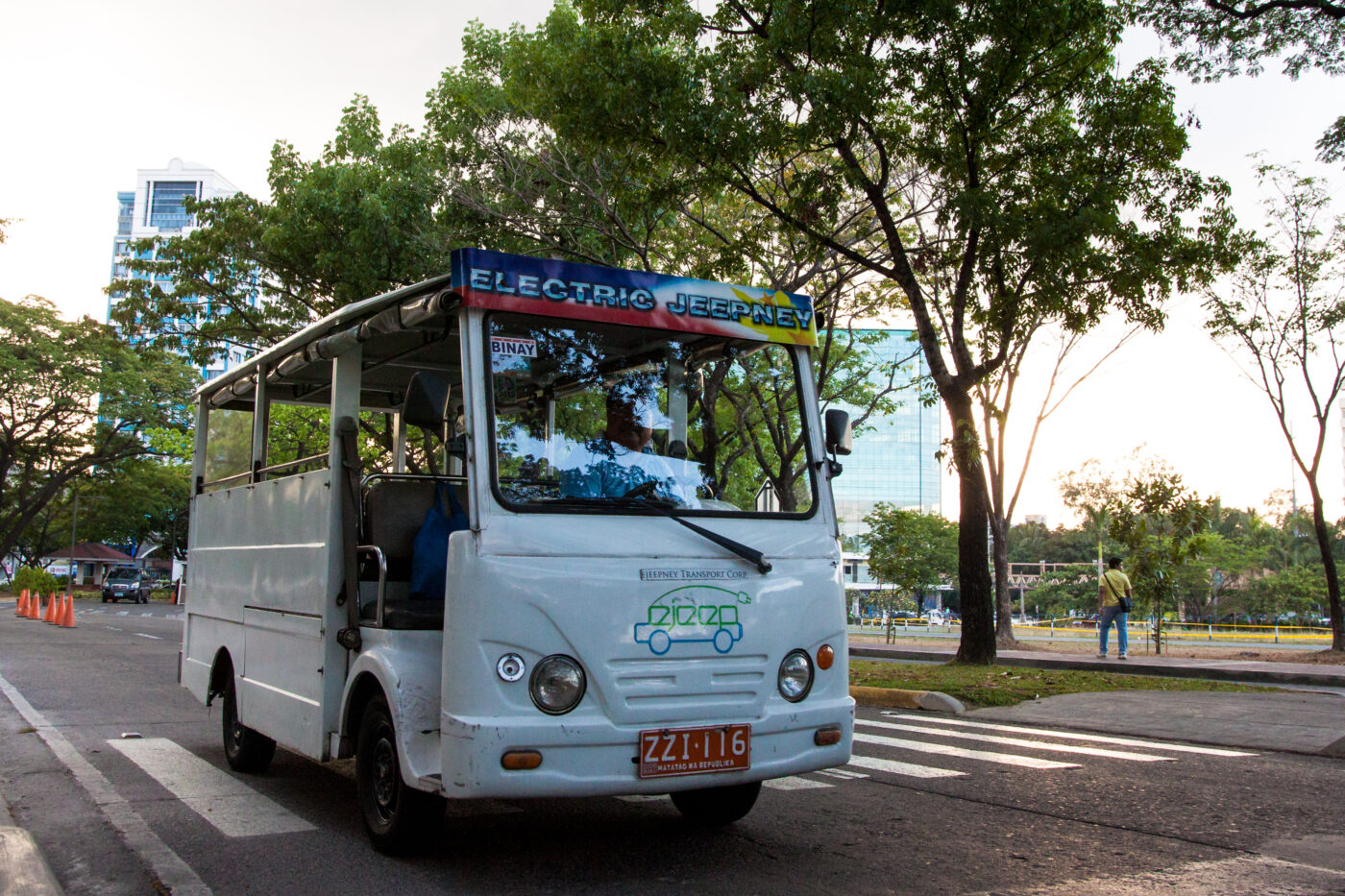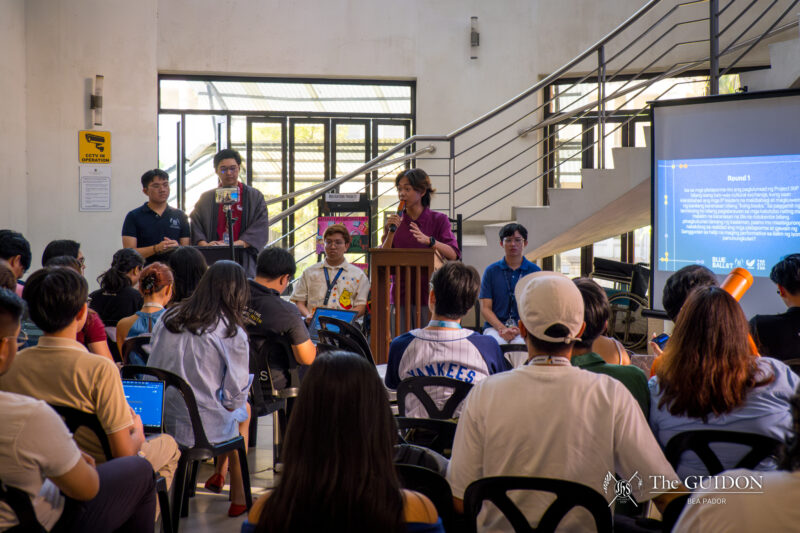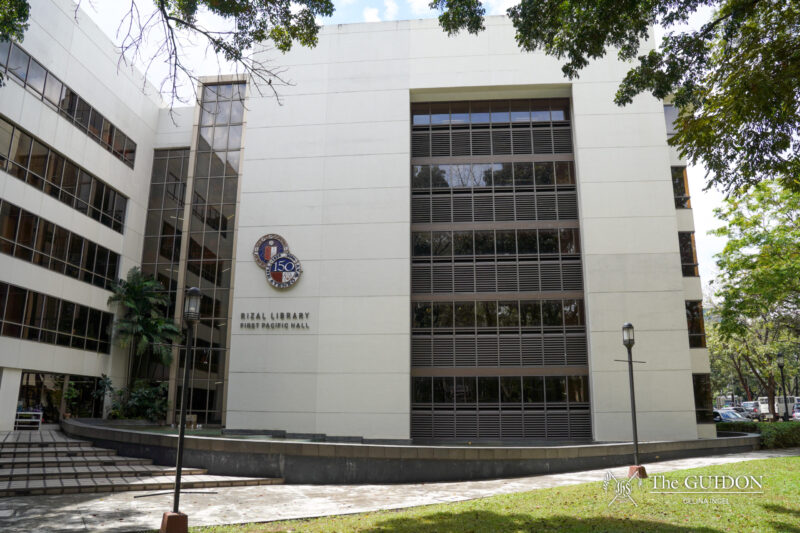THE ADMINISTRATION is considering changing the electronic jeepney (e-jeep) system in order to provide a campus shuttle service of better quality.
Units from the eJeepney Transport Corporation (EJTC) currently provide the university’s shuttle services. The EJTC shuttles can run up to 30 kilometers per hour, the maximum speed allowed on campus. The shuttle units can accommodate 10 to 11 persons.
“We want a better [shuttle] system. Not that the [current] system is bad, but it’s just because it can always be better,” said Ateneo Environmental Management Council Coordinator Abigail Favis in an interview with The GUIDON.
Last January, City Optimized Managed Electric Transport (Comet), a fully electric-powered shuttle, had a road show inside the campus. However, Favis clarified that the event only served as a test run for the Comet’s external routes.
Comet units can accommodate up to 20 passengers and can run 60 kilometers per hour. The shuttle is also equipped with closed-circuit television (CCTV) cameras to keep track of the passengers, who will be charged P8 for every ride.
In an article released in the school’s official website, Assistant to the Vice President for Administration Nico Maniquis said that, aside from the EJTC and the Comet, the Ateneo is also considering M-Serv to be a potential campus shuttle service provider next school year.
Implementing the e-jeeps
The shuttle system was first introduced in the Ateneo in February 2013.
Drop-off points are located in the following areas: Ateneo Grade School, John Gokongwei School of Management Student Enterprise Center, Xavier Hall and the Ateneo High School.
Favis said that the shuttles were implemented due to the enforcement of the one-way traffic scheme in the Ateneo.
“Now that [the flow of traffic] is one-way, we thought it might help a lot of our community members if we also provided an internal shuttle to help them move from one point to another without bringing their own [vehicles],” she said.
Favis expounded that the e-jeeps were particularly intended for parents who bring their children to multiple areas within the Ateneo.
Constructions Management of Technical Services Head Rolando Santos added that the main function of the shuttles is to reduce and manage the traffic flow by minimizing the vehicles that travel inside the campus.
According to him, research data on the shuttle passengers collected by the Facilities Management Office revealed that the Ateneo community has benefitted from the EJTC shuttles.
Santos said that the shuttle system also serves as a response to the environment development strategic thrust set by University President Jose Ramon Villarin, SJ for the Ateneo.
For Santos, the implementation of the shuttle service on campus is one concrete way of strengthening the school’s sustainability efforts since the shuttles do not have harmful emissions.
Presently, the EJTC units run in the Ateneo without a passenger fee. However, Villarin clarified that the Ateneo is still paying for the shuttle service as a whole.
“That cost is actually shared by everyone,” he said.
Planning for improvements
Although the specific plans for the improvement of the shuttles have not yet been laid out, Ateneo Environmental Management Council Coordinator Favis said that they are currently evaluating the campus e-jeeps implementation to determine areas of concern.
For example, she observed that the shuttle can only cater to some of members of the Ateneo community due to the limited number of drop-off points.
Life sciences sophomore Aloisa Villanueva suggested the addition of drop-off points at gates 2.5, 3 and 3.5 to make the shuttles more accessible to students.
However, Favis said that the the administration is still determining whether increasing the number of stops will truly improve the shuttle services on campus. This factor is part of the evaluation of the e-jeeps.
Meanwhile, Constructions Management of Technical Services Head Santos suggested increasing the passenger capacity of the e-jeeps.
According to him, upgrading the e-jeep size will also demand improvement of its technicalities, including lessening the shuttle motor’s breakdown incidents.
“Having bigger versions [of the shuttle], we need bigger power, bigger motor, much improved battery system and reliable charging stations,” he said.
However, Santos clarified that there is still no final decision as to whether the EJTC will be replaced or not. He added that the different bidding e-jeep companies are still submitting their proposals to the administration.







